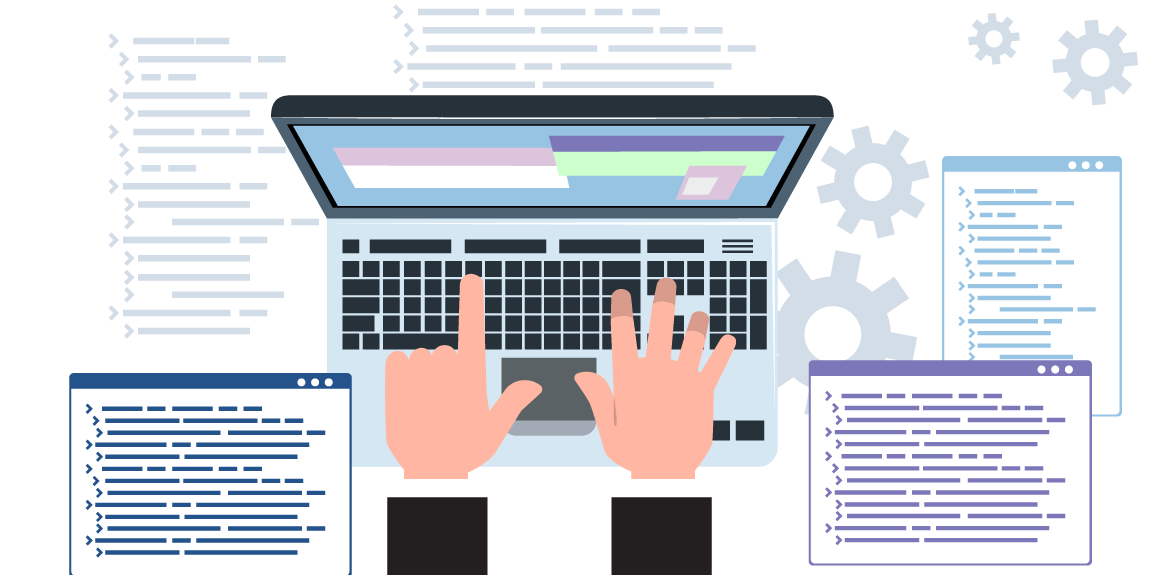Many of you who need translation services probably think that computer-program translation is not a bad option. Wrong. Always hire human translators for your business needs. Maybe it isn`t for a quick informal translation, but it really depends of what kind of material is involved.
Human translators will always be needed
Human translation, often carried out by professional translators, is the art of rendering text from one language to another with precision, context, and cultural sensitivity. In recent years, the emergence of neural networks and machine translation technology has revolutionized translation projects, streamlining the translation process and improving efficiency. Despite advancements in machine translation systems, high-quality translation still relies heavily on human linguists who understand the nuances of language and cultural references. Translation agencies leverage a combination of machine translation technology and human expertise to cater to a diverse target audience across various language pairs. While statistical and rule-based machine translations offer automated solutions, professional translation services emphasize the importance of manual translation and the use of translation tools such as CAT tools and translation memory to maintain consistency and accuracy. Freelance translators also play a significant role in the translation industry, offering specialized expertise and cultural insights. Ultimately, whether through machine translation systems or human translation services, achieving effective communication in a globalized world requires a blend of artificial intelligence and the human touch to ensure that marketing materials and other content resonate with the target audience while preserving cultural sensitivity and authenticity.

The era of technology
This is the era of technology. Human labor has been replaced by machines and computers in almost all fields of the world today. The translation sector is a growing sector and there are many technological advancements taking place here. As it happens in all other sectors, will machine translators replace human translators?
The chances of human translators being replaced by machine translators are close to nil because a translation is not just about translating words. to translate a document or some content, it is important to understand the emotional and cultural aspect of it which can only be done by humans. The technology has not yet been able to create a machine that can maintain the cultural and emotional aspect of any content. It can only carry out the literal translation and will not translate it according to what the linguistic culture is. This is the major reason why human translators cannot be replaced by machine translators.
Can computers produce accurate translations?
Most professionals agree that computers can`t, and never will, produce quality translations of major literary works. The professionals are correct 99.9% of the time. Translation of great literary works or other legal documents requires special literary skill.
What computer or program can translate a great Shakespeare piece?! Translation needs spirit.
Only a person can give you this, not a computer. The best way for you to present your product to a foreign market, or for any translation you need, is to hire a translation company with human translators.
Even a human does not always produce a perfect translation right away.

The job of translating is divided into two phases
In the first stage, a worker produces a translation in which words are “scattered” and then performs a revision – this can be done by the same translator, or it is preferable that companies have a second translator, or a team of them. Revision can sometimes mean just a check, and sometimes radical changes are needed in the text.
Translation quality is the main reason why human translators are so much better than computer programs or machines.
Inventors and programmers are always trying to displace humans or put them out of work! Reason and experience show, however, that a good program for translation can not be achieved so easily.
As all human translators know, a “word for word” translation does not produce satisfactory meaning in the target language, even when some local rules of word order changes are in the dictionary.
Translation of the text not only requires good knowledge of vocabulary in the source and target language, but also their grammar. It also requires a good deal of familiarity with the real world, knowledge of the nature of the topic and how the parts work together, and also technical knowledge about the topic that is being translated.
The conclusion is that computers can translate literally, word for word, and that is certainly not what you need for professional documents. What you need is a team of human translators. The best way is to hire a translation company and show the world that you are a professional.
Software Enhances Translation Efficiency
Translation software plays a pivotal role in modern translation workflows, aiding both professional linguists and translation teams in their endeavors to bridge language barriers effectively. These tools, ranging from statistical machine translations to more advanced systems, assist in converting text from a source language to a target language. While such software can handle straightforward translations, professional linguists remain crucial for tackling complex linguistic nuances, idiomatic expressions, and cultural subtleties that automated systems may struggle with. The collaboration between translation teams, comprising both human experts and software, ensures a comprehensive and accurate translation process. By incorporating the expertise of professional linguists alongside the capabilities of translation software, translation workflows can efficiently navigate the intricacies of language while delivering high-quality translations that resonate with the intended audience.
Translation & High-Level Languages
High-level languages play a pivotal role in the translation industry, where translation memory tools assist in accurately converting source code into various languages. While high-level programming languages simplify coding, different types of translators, including machine translation tools, ensure an accurate translation process. From assembly languages to low-level languages, terminology management and grammatical rules are crucial for precise translation projects. As the future of translation evolves, language models and real-time translation apps aim to streamline the translation of programming languages into machine code, reducing time to market. With style guides and efficient workflow automation tools, accurate translation software continues to advance, facilitating the localization process for a wide range of features in mobile apps and credit card systems.
High-level programming languages serve as the foundation for software development, enabling developers to express complex algorithms and logic in a more human-readable format. Source code written in high-level languages undergoes translation into machine-readable instructions, ultimately resulting in an executable file. Throughout this process, various file formats and types are utilized to accommodate different platforms and environments. Automatic translation tools aid in the conversion of source code into machine code, while assembly code serves as an intermediary step in this translation process. Translation apps facilitate the seamless conversion of language into machine code, bridging the gap between high-level programming languages and low-level machine instructions. These apps streamline the entire translation process, ensuring accuracy and efficiency in converting high-level language programs into native machine code. As language evolution continues, notable programming languages like those supported by Bing Microsoft are constantly refined to produce high-level code that is more efficient and optimized for execution on virtual machines. Language translators play a crucial role in this evolution, facilitating the adaptation of native code to meet the demands of modern computing environments. Overall, the extensive language capabilities offered by high-level programming languages pave the way for innovation and advancement in software development.
An executable file is the culmination of coding efforts, representing a compiled program ready for execution. Various file formats and types accommodate different platforms and requirements, ensuring compatibility and functionality. Throughout the development process, the conversion of code into machine code is crucial, with translation apps aiding in this transformation. While high-level programming languages simplify coding, low-level languages and machine learning techniques optimize performance and efficiency, reducing execution time. Whether it’s a high-level language program or a low-level implementation, the successful execution of an entire program hinges on accurate translation and efficient processing, ultimately driving innovation and progress in the digital landscape.
Challenges in Automatic Translation
Automatic translation, though advancing rapidly, is often criticized for inaccurate translations that prioritize literal meanings at the sentence level. The accuracy rate varies significantly across languages and contexts. Matt Strach, a Latin American expert, highlights the challenges, especially in low-resource languages, where inaccurate translations can lead to substantial financial losses. Achieving high-quality work hinges on improving the accuracy of machine translation and developing robust machine translation quality estimation methods. These efforts are critical in enhancing the reliability and usability of automated translation tools across diverse linguistic and professional domains.
FREQUENTLY ASKED QUESTIONS
While computers and AI have advanced in translation, human translators are still essential for nuanced understanding, cultural context, and accuracy.
Machine translation has its limitations in handling complex nuances, idiomatic expressions, and cultural subtleties, where human translators excel.
While technology continues to evolve, human translators bring creativity, cultural sensitivity, and context comprehension that machines cannot replicate.
Computers excel in speed and handling large volumes of text, but human translators offer superior quality in preserving meaning and context.
Human translators can utilize translation software for efficiency, but their expertise is still crucial for ensuring accurate and culturally appropriate translations.








